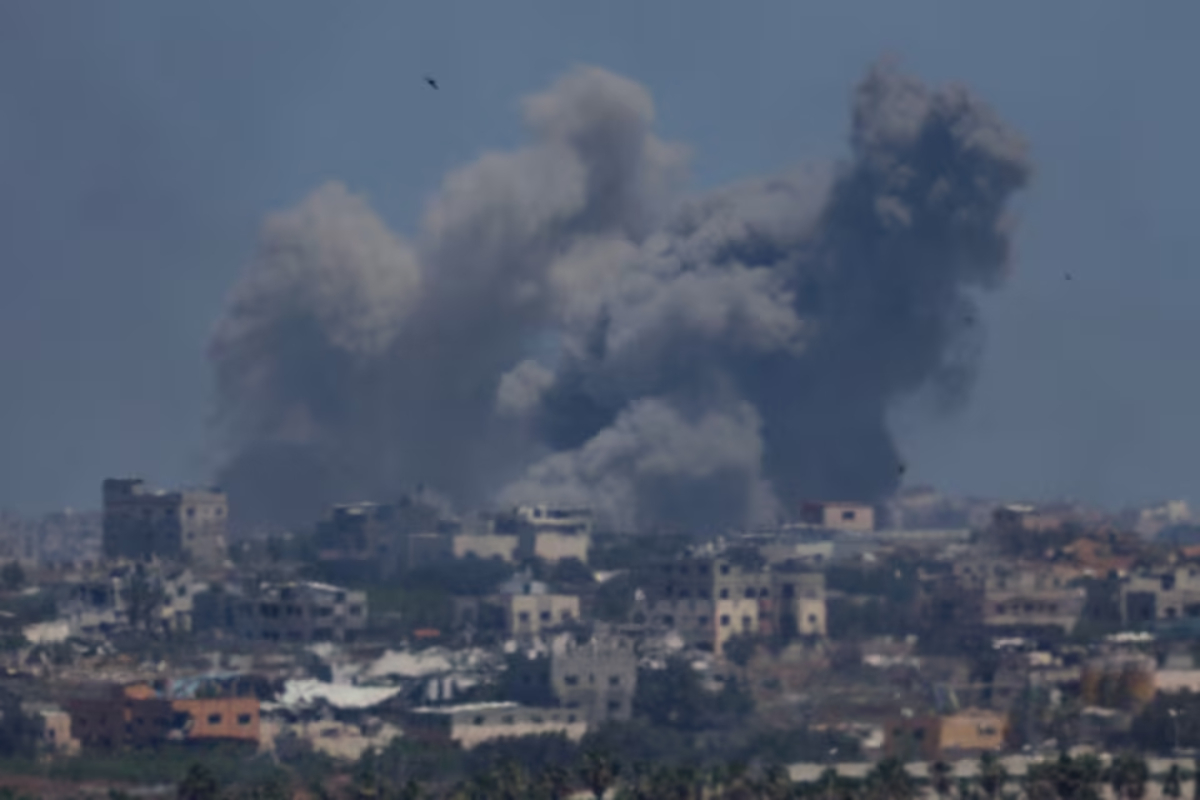GAZA: Israel’s tanks pushed into the heart of Jabalia in northern Gaza on Thursday, facing anti-tank rockets and mortar bombs from militants concentrated there, while in the south, its forces pounded Rafah without advancing, Palestinian residents and militants said.
The slow progress of Israel’s offensive, more than seven months after launched an deadly war, highlighted the difficulty of achieving Prime Minister Benjamin Netanyahu’s aim of eradicating Hamas.
Armed wings of Hamas and its ally Islamic Jihad have been able to fight up and down the Gaza Strip, using heavily fortified tunnels to stage attacks in both the north – the focus of Israel’s initial invasion – and new battlegrounds like Rafah.
“We are wearing Hamas down,” Israeli Defence Minister Yoav Gallant said, announcing that more troops would be deployed in Rafah, where he said several tunnels had been destroyed. Senior Hamas official Sami Abu Zuhri responded that the group would defend its people “by all means”.
Israel says four Hamas battalions are now in Rafah along with hostages abducted during the October 7 assault, but it faces international pressure not to invade the city, where hundreds of thousands of displaced Palestinian civilians are sheltering.
The Gaza death toll has risen to 35,272, health officials in the coastal enclave said, and malnutrition is widespread with international aid efforts blocked by the violence and Israel’s de-facto shutdowns of its Kerem Shalom crossing and the Rafah border crossing with Egypt.
The United States anchored a temporary floating pier to a beach in Gaza on Thursday to boost aid deliveries, but it was still unclear how it would be distributed given the challenges that have beset the United Nations and relief groups for months.
The United Nations stressed that delivering aid by land was the “most viable, effective and efficient” method. “To stave off the horrors of famine, we must use the fastest and most obvious route to reach the people of Gaza – and for that, we need access by land now,” deputy UN spokesperson Farhan Haq said.
The United States State Department said the humanitarian situation in Gaza continued to deteriorate and urged Israel to allow sustained access for aid via the southern and northern parts of the enclave.
Israel’s military says its operation in Rafah is meant to kill Hamas fighters and dismantle infrastructure used by the group, which governs the blockaded Palestinian territory. Israel accuses Hamas of diverting aid, something it denies.
Egyptian sources said Cairo, which fears a mass exodus from Gaza to Egypt, had rejected an Israeli request to coordinate on the reopening of the Rafah border crossing, which Israel seized on May 7, and keep it beyond Palestinian control. Ceasefire and hostage release talks are deadlocked over how to end the war.
Hamas chief Ismail Haniyeh said his group should continue to have a role while the Palestinian Authority, which Western leaders want to oversee Gaza, said it did not have enough funds to fulfill its current limited governing role in the Israeli-occupied West Bank.
Israel declared major operations over in northern Gaza months ago while pledging to return to prevent Hamas regrouping. On Thursday, around a week after they moved back in, Israeli tanks were heavily bombarding the main market in the heart of Jabalia, a decades-old refugee camp, and several stores there caught fire.
Earlier, the armed wing of Hamas said its fighters in Jabalia had destroyed an Israeli troop carrier with a locally made Al-Yassin 105 anti-tank rocket, causing casualties.
Israel says it has eliminated many gunmen in Jabalia but had no new comment on developments there on Thursday. In the southern tip of Gaza, tanks held their positions in eastern neighbourhoods and outskirts of Rafah while keeping up pressure with aerial and ground bombardments.


